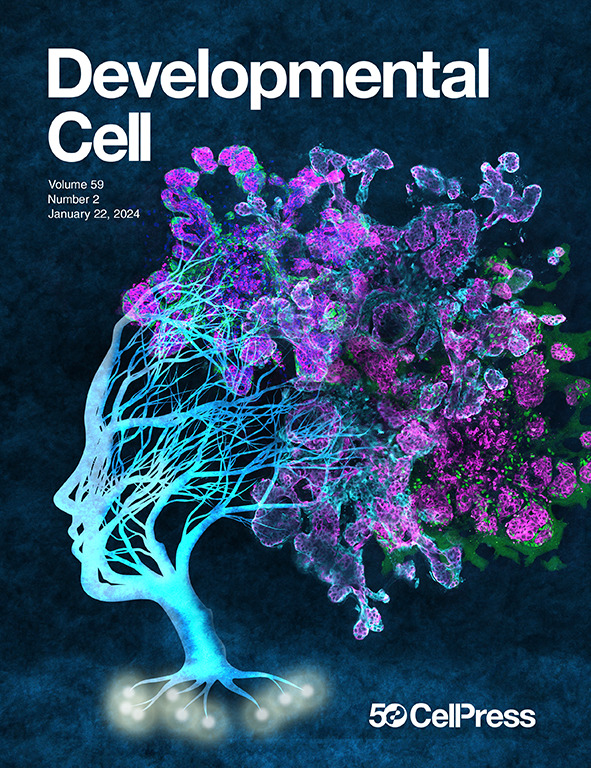上皮细胞分泌的细胞外基质生态位驱动肠道类器官的形成
IF 8.7
1区 生物学
Q1 CELL BIOLOGY
引用次数: 0
摘要
肠道类器官已成为基础和转化研究中的重要模型系统,但其培养通常依赖于定义不清的富含层粘胶蛋白的细胞外基质(ECM)。利用可调的和化学定义的3D水凝胶,我们系统地探索了ECM在小鼠和人类肠道类器官发育中的作用。我们发现,在没有外源性层粘连蛋白的情况下,干细胞发育成肠上皮,其中再生细胞占很大比例。该群体分泌富含层粘连蛋白的基底膜,作为新生干细胞生态位,促进独立于外源层粘连蛋白的类器官形成。我们发现层粘连蛋白链Lama3、lam3和Lamc2普遍表达,但Lamb1和Lamc1在空间上仅限于隐窝结构域。从类器官中提取的上皮细胞分泌基底膜促进了图案类器官的形成。我们的研究结果强调了化学定义的基质在研究ECM生物学中的效用,并为在类器官培养中替代动物来源的基质铺平了道路。本文章由计算机程序翻译,如有差异,请以英文原文为准。

An extracellular matrix niche secreted by epithelial cells drives intestinal organoid formation
Intestinal organoids have become an important model system in basic and translational research, but their culture typically relies on an ill-defined laminin-rich extracellular matrix (ECM). Using tunable and chemically defined 3D hydrogels, we systematically explored the role of the ECM during murine and human intestinal organoid development. We discovered that without exogenous laminin, stem cells developed into intestinal epithelia with a large proportion of regenerative cells. This population secreted a laminin-rich basement membrane that functioned as a de novo stem cell niche, promoting organoid formation independent of exogenous laminin. We identified ubiquitous expression of laminin chains Lama3, Lamb3, and Lamc2, but Lamb1 and Lamc1 were spatially restricted to the crypt domain. Epithelial-cell-secreted basement membranes extracted from organoids promoted the formation of patterned organoids. Our results highlight the utility of chemically defined matrices for studying ECM biology and pave the way for the replacement of animal-derived matrices in organoid culture.
求助全文
通过发布文献求助,成功后即可免费获取论文全文。
去求助
来源期刊

Developmental cell
生物-发育生物学
CiteScore
18.90
自引率
1.70%
发文量
203
审稿时长
3-6 weeks
期刊介绍:
Developmental Cell, established in 2001, is a comprehensive journal that explores a wide range of topics in cell and developmental biology. Our publication encompasses work across various disciplines within biology, with a particular emphasis on investigating the intersections between cell biology, developmental biology, and other related fields. Our primary objective is to present research conducted through a cell biological perspective, addressing the essential mechanisms governing cell function, cellular interactions, and responses to the environment. Moreover, we focus on understanding the collective behavior of cells, culminating in the formation of tissues, organs, and whole organisms, while also investigating the consequences of any malfunctions in these intricate processes.
 求助内容:
求助内容: 应助结果提醒方式:
应助结果提醒方式:


